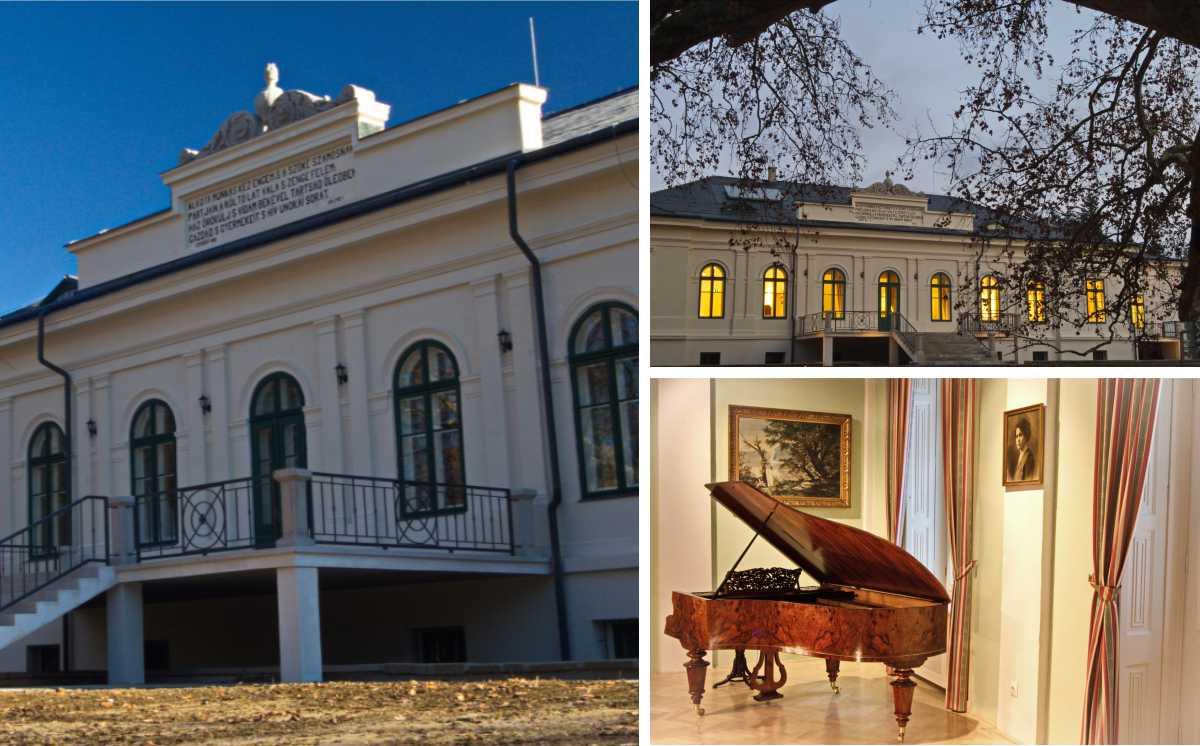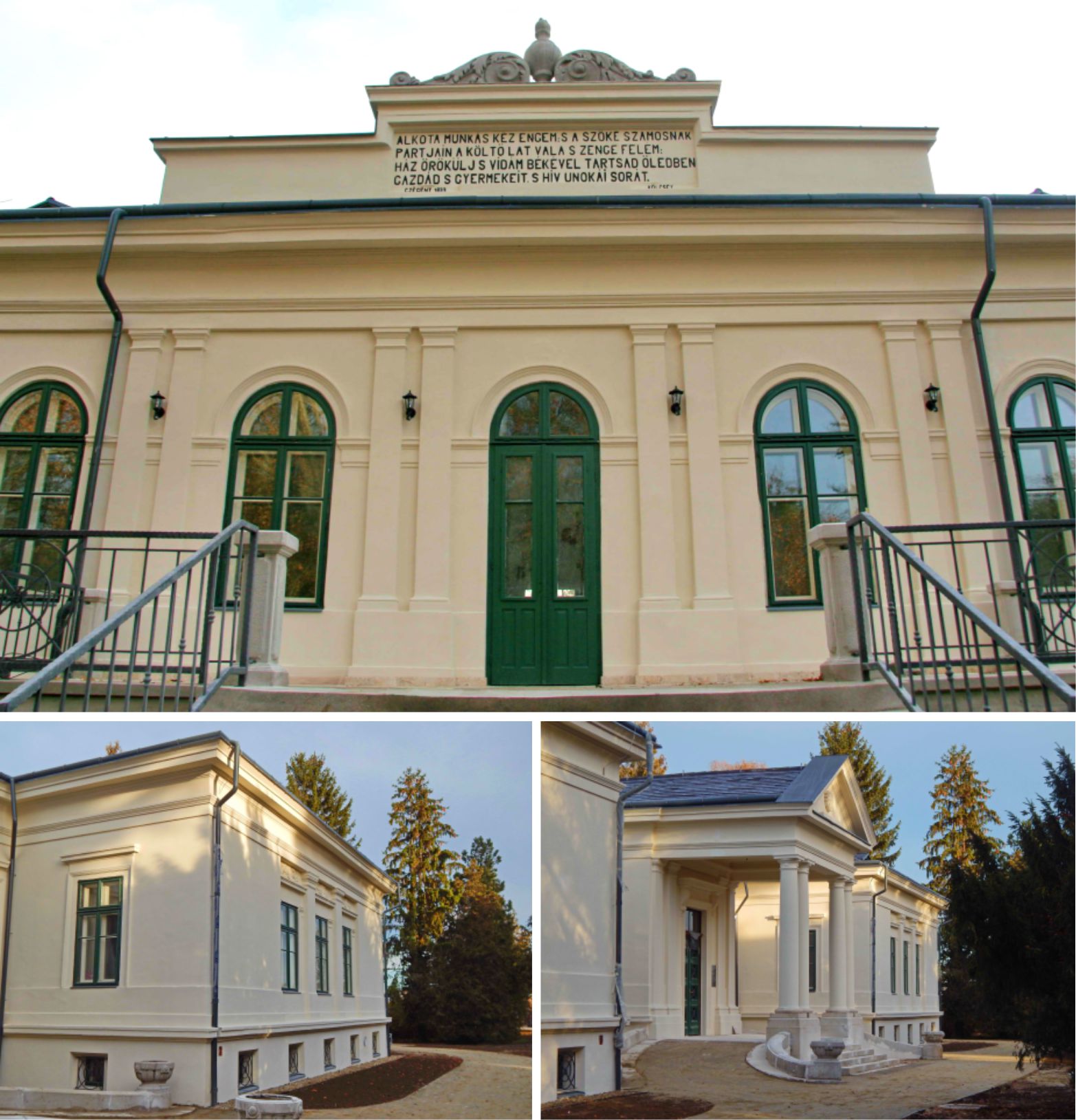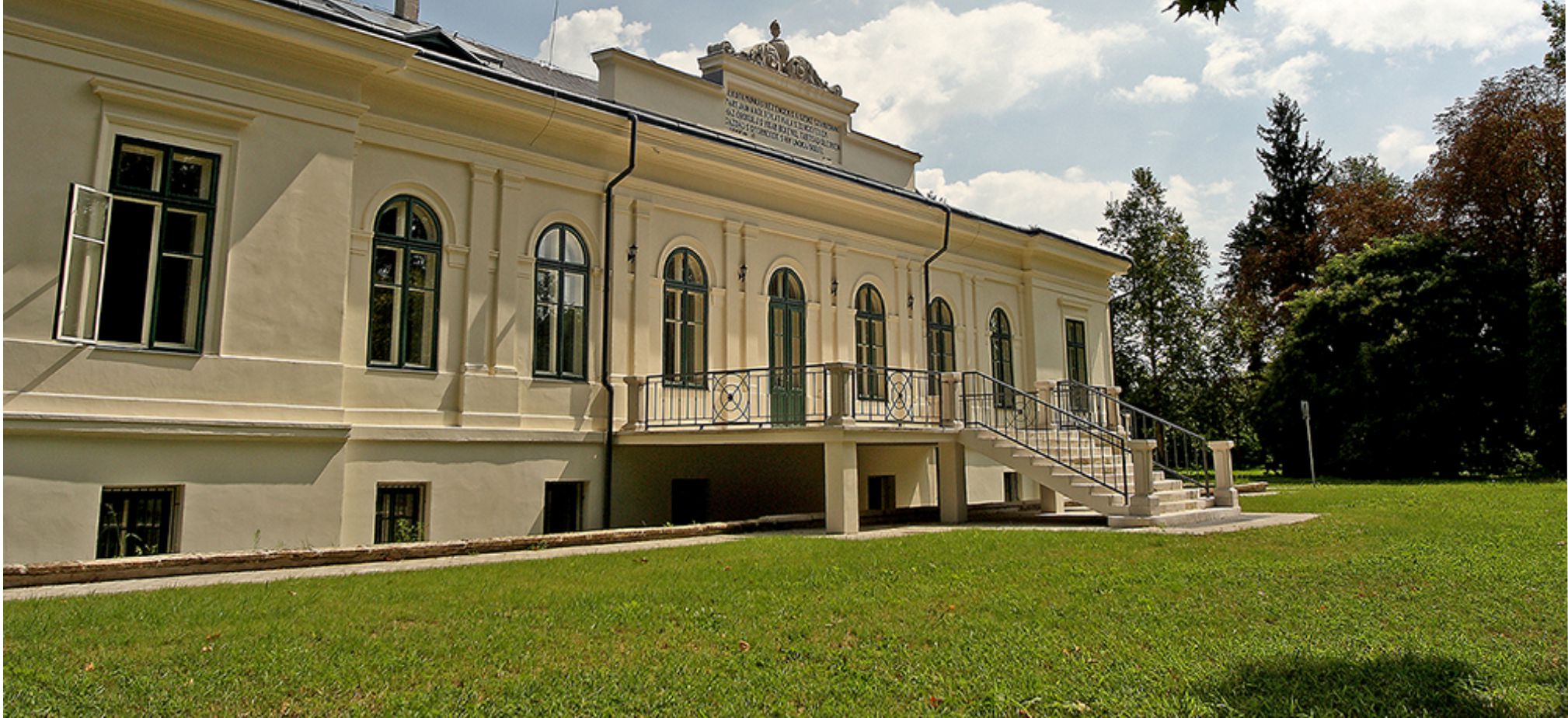Cégénydányád Castle Park NCA
“The work of laborious hands am I
on the banks of the blond Szamos lies
the poet who catching glimpse of me,
immediately sings to me
Be handed down, thou House!
Be transmitted by inheritance,
save long thine lord in thine lapse
keep long his children as well as
joyous peace for grandchildren.”
Kölcsey (1833), Czégény
The former park extending over more than 50 ha has shrunk to 16.2 ha. It became protected in 1960. At present the mansion built around 1830 gives home to a children's home. The park is open to visitors and tourists. Tourists intending to visit the mansion are to consult the leader of the children's home to ensure the tranquillity of the institution.


2. Prospects for nature conservation, the characteristic features of the area
The high precipitation (570-600 mm) and the air moisture provide better climatic conditions than elsewhere, on other lowland areas. Moreover, the forest has a protective effect on the alluvial soil which is rich in nutrients. All these factors contribute to the development of plants that otherwise would not be able to survive under the Hungarian climatic conditions. Earlier mainly trees had been planted here like Sycamore Maple, Silver Lindern, Beech, Red Ash. Only in the mid-19th century did Zsigmond Kende, the grandchild proceeding with the park constructions, turn his attention towards conifers. It was him, who supported the formation of prominent stands. As a result of his work the various conifers and deciduous trees together with the scattered birch trees with their white trunks provided a harmonious assembly of colours and shapes in all the four seasons. The park was especially compelling at times of blooming in spring and during the discoloration in autumn.
The proficiently managed park was almost totally destroyed after the 2nd World War. The trees were felled by all and sundry. A large area was taken away/torn away from the park where a sports field and several houses were established. In order to save the animals from the devastating floods of the Szamos the livestock of the neighbourhood was taken to the park in 1970 which had already been declared a reserve. Almost all the shrubs and the smaller trees were extinguished. Owing to the great amounts of organic fertiliser/dung the area has got quickly overgrown with weeds. The ineradicable stands of nettles and stinking elder indicate this process even today. In 1984 the North-Plain Superintendency for Environmental Protection initiated a long-term reconstruction programme. The ill and withered trees as well as the surplus shrubs were cut out and were replaced by grasslands and regularly managed clearings together with conifers and ornamental shrubbery. Later the new owner, the Hortobágy National Park Directorate went on with the reconstruction. The total reconstruction has not been over, yet. In fact, it will take some more years of hard work to restore the habitat to its nearly original condition.
The soil with fairly good water supplies contributes to the development of all kinds of tree specimens. Several huge and ageing specimens of the sycamore maple London Plane can be found in the garden. The girth of the biggest tree was 722 cm at chest height in 1998 whereas the girth of the "smaller ones" ranged from 593 to 449 cm (593, 554, 487, 473, 465, 449). The claret brownish foliage of the common beach (Fagus sylvatica var. atropuninicea) planted together with the former trees offer spectacular sights for visitors. The girth of one of the trees is 255 cm while that of another is 239 cm. The separate group of European Chestnuts with their shining leaves echoes the friendly atmosphere of the Mediterranean. Their width at chest height ranging from 388 to 316 cm cannot be compared to that of their transdanubian relatives, even so they are unique.
Landscape-gardeners established plantations/planted trees of American origin. Such are the Tulip Trees for instance. The greatest of all has a girth of 337 cm. The old giant Red Oak not far from this site is also from the New World. Its red foliage is one of the most beautiful elements of the autumn park. Similarly to the Red Oak the Pin Oak is also of American origin developing on the fresh soil. The Chinese Ginko (Ginko biloba), a popular species of Hungarian park constructions, was introduced here during the first phase of the construction. The girth of the largest specimen reaches as far as 235 cm. The light pink flowers of the three magnolia species (Magnolia pp.) are precious ornaments of this part of the garden. Due to the fashion of the era various conifers were planted during the second phase of the construction. Near the corner of the building a group ofYewtrees grows, the largest specimen towards the insides being 18 m tall with a girth of 404 cm right under the ramifications and a diameter of its foliage exceeding 32 m. Among the conifers the most conspicuous one is the Cancasian fir (Abies normanniana). Its silver green needles strikingly differ from the other evergreens. Its girth reaches 200 cm. Not far from the Tulip Treesstand the dark green columns of the Lawson Cypresses counterbalancing the vivid green dash of the Tulip Trees. A solitary Pencil Cedar can be found near here providing a refuge for the cat owlLong-eared Owl. The Szamos provides a suitable site for the development of the deciduousSwamp Cypress. The most beautiful stand of the garden is that of the Weymouth Pines. Unfortunately, owing to their age only one is able to present us with the amazing chandelier-like branches. The girth of the two biggest remnant specimens are as large as 378 and 306 cm. A group of Caucasian Wing-nuts is formed near here along with its saplings. The landscape-gardeners have planted conifers wide-spread within Hungary as well. The red bark of a solitaryScot's Pine is striking from a great distance. Its dark foliage harmoniously melts/fits into the lighter green leaves of the deciduous trees. Black Pines line up on the Northern part of the garden. Only one or two specimens represent the old hardwood forests of the Szamos. Such include the 25-metre-tall White Poplar with a girth of 520 cm or the robur with its girth exceeding 300 cm. The productive Turkish Hazel is a species of the Balkans.
As was mentioned above the stands of the ornamental shrubbery were almost totally destroyed in 1970. Unfortunately only few of them are worth mentioning today. Such include species like the Bottle-brush Buckeye or other species offering spectacular dashes of colour among the autumn shrubs such as the Common Elder with its flamming red berries or the European Spindlewith its coral red fruits. At other places the stems of the Common Pokeberry are conspicuous. In the times of our grandmothers the purple sap of its juicy fruits used to serve as a well-known dye solution for colouring food. Ivy forms vivid green carpets on areas that were cleared off the European elder during the reconstruction. The Winter Aconite appears right after the melting of the snow in early spring forming several golden yellow patches of the odorous flowers. The sizes of the patches add up to a total of 3-400 square metres which provides us with an unforgettable sight.
The forested and shrubby biotopes have been populated by birds. Colourful flocks of song birds as well as the Lesser Spotted Woodpecker, Middle Spotted Woodpecker and Greater Spotted Woodpecker and the Syrian Woodpecker can be found here. Moreover the Black Woodpecker is also common here. The nests of hundreds of Rooks would be seen in the foliage of the large sycamore maples but since the number of Rooks had overall decreased, they also vanished from this habitat. Their former "co-tenants", the Raven are still present here with about 30 pairs. However, the real ornithological significance of the garden is the Raven pair that has been living here for two decades. Despite the uproar of the children and the tourists they fledge 2 or 3 nestling year after year in their nest at the top of a huge Scot's Pine in the middle of the village.
Entrance fee:
Adult: 1200 HUF/Person
Reduced (6-26 years or over 65 years): 900 HUF/Person
Child (3-6 years): 300 HUF/Person
Family (2 adults and 1 or 2 children): 2500 HUF/Family
Opening times:
1. January - 31. May: closed
1. June - 31. August 9.00-17.00

















